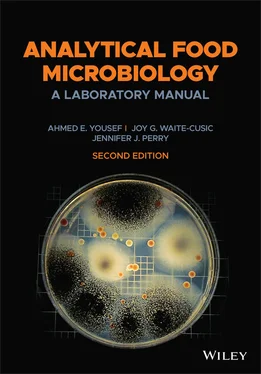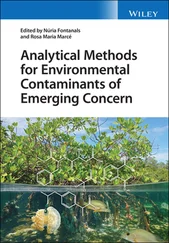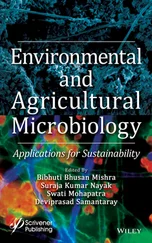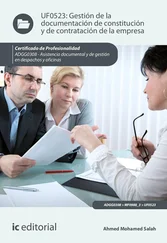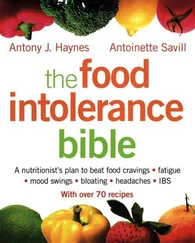9 Chapter 11TABLE 11.1 Differentiation of Listeria spp. by biochemical testing and blood hemo...TABLE 11.2 Detection of Listeria monocytogenes in food and environmental samples.TABLE 11.3 {add a descriptive title for this data, including food sample used, so...TABLE 11.4 {add a descriptive title for this data, including food sample used, so...
10 Chapter 12TABLE 12.1 Description of observed enrichment media and result of immunoassay tes...TABLE 12.2 Characteristics of Salmonella on isolation and biochemical identificat...TABLE 12.3 ( Add a descriptive title, including food and how results were obt ...TABLE 12.4 Biochemical tests included in the API‐20E test strip, test interpretat...TABLE 12.5 McFarland standards and approximate cell density.
11 Chapter 13TABLE 13.1 {Add a descriptive title, including food and how results were obtained...TABLE 13.2 { Add a descriptive title, including food and how results were obt ...
12 Chapter 14TABLE 14.1 Surviving populations of Pseudomonas sp. and Enterococcus sp. when ino...TABLE 14.2 {Add a descriptive title, describing the results of heating Enterococc...TABLE 14.3 {Add a descriptive title including food and how results were obtained}
13 Chapter 15TABLE 15.1 Population count and pH of milk fermented (or unfermented) with a lact...TABLE 15.2 Diameter of inhibition areas resulting from spotting 5 μl of nisin st...TABLE 15.3 Bacteriocin concentrations (IU/ml) ain samples of fermented milk.
14 Part 3TABLE III.1 Modes of transmission of microbial foodborne diseases.
15 Part 4TABLE IV.1 Antimicrobial factors and associated technologies used in control of f...
1 Chapter 2 Figure 2.1 Food sampling. Figure 2.2 Food blender (left) and stomacher (right). Figure 2.3 Decimal dilution of food homogenate.
2 Chapter 3 Figure 3.1 Example of a dilution scheme, showing the dilutions (prepared fro... Figure 3.2 Darkfield Quebec colony counter with a Petri plate mounted for co... Figure 3.3 Procedure to estimate microbial population count in samples using... Figure 3.4 Decision tree for applying microbial colony and population count ... Figure 3.5 Applying colony and population counting rules. Figure 3.6 Dilution and inoculation scheme for most probable number techniqu...
3 Chapter 4 Figure 4.1 Types of culture media that are commonly used in microbiological ... Figure 4.2 Basic techniques as practiced in this exercise. Figure 4.3 Dilution and plating scheme used in basic technique exercise. Figure 4.4 Labeling the bottom of a Petri plate.Figure 4.5 Three‐phase streaking.Figure 4.6 Smear preparation and Gram staining.
4 Chapter 5Figure 5.1 An overview of the aerobic mesophilic plate count method.Figure 5.2 Suggested dilution scheme for aerobic mesophilic plate count exer...Figure 5.3 A sample of results of market food analyzed using the mesophilic ...
5 Chapter 6Figure 6.1 Life cycle of a spore‐forming bacterium. Dark shades (e.g., cell ...Figure 6.2 Transmission electron micrograph of Bacillus subtilis spores (Cou...Figure 6.3 Outline of procedure for counting aerobic and anaerobic mesophili...
6 Chapter 7Figure 7.1 Scheme of testing food for Pseudomonas spp. and other psychrotrop...
7 Chapter 8Figure 8.1 Detection and enumeration of Enterobacteriaceae in food.Figure 8.2 Most‐probable number (MPN) Enterobacteriaceae enrichment broth (E...
8 Chapter 9Figure 9.1 Classification of fungi associated with food. Some genera are gro...Figure 9.2 Scheme of testing food for fungi.Figure 9.3 Slide culture assemblyFigure 9.4 Hand‐held hard cheese shredder.
9 Chapter 10Figure 10.1 Enumeration and identification of Staphylococcus aureus in food....Figure 10.2 Colonies of Staphylococcus aureus (a) and S. epidermidis (b) on ...Figure 10.3 Detection of staphylococcal enterotoxin gene ( sea ) in food isola...Figure 10.4 Basics of gene expression in bacterial cell.Figure 10.5 Enzyme‐linked immunoassay used in detection of staphylococcal en...Figure 10.6 Microfiltration to prepare cell‐free culture supernatant.
10 Chapter 11Figure 11.1 Detection of Listeria spp. in food and environmental sample usin...Figure 11.2 Detection of Listeria monocytogenes in food and environmental sa...
11 Chapter 12Figure 12.1 Method for detection of Salmonella in food.Figure 12.2 Scoring the incubated API‐20E strip for food isolate and positiv...
12 Chapter 13Figure 13.1 Complete procedure for the detection of Shiga toxin‐producing Es ...Figure 13.2 Detection of Shiga toxin‐producing Escherichia coli (STEC) in fo...Figure 13.3 Detection of Shiga toxin‐producing Escherichia coli in food samp...Figure 13.4 Gel showing multiplex PCR products resulting from Escherichia co ...Figure 13.5 Matrix of 24 inculcated microfuge tubes, prepared for PCR‐assist...
13 Chapter 14Figure 14.1 Illustration of a survivor plot of an organism.Figure 14.2 Illustration of a thermal resistance plot for an organism.Figure 14.3 Procedure to determine thermotolerance of inoculated bacteria in...Figure 14.4 Linear‐linear graphing paper.
14 Chapter 15Figure 15.1 Bioassay for quantifying antimicrobial activity in a fermentate ...Figure 15.2 Bioassay for quantifying antimicrobial activity in milk fermenta...Figure 15.3 Inhibition areas resulting from spotting dilutions of nisin stoc...Figure 15.4 Dose response plot depicting the linear relationship between logFigure 15.5 Procedure overview of production of antimicrobial ingredients.Figure 15.6 Microfiltration of bacteriocin‐containing fermentate.
15 Part 2Figure II.1 Typical links in the food supply chain.Figure II.2 Taxonomy of foodborne bacteria, drawn from Bergey’s manual of sy...
16 Part 3Figure III.1 Enzyme‐linked immunosorbent bioassay (ELISA) technique for dete...Figure III.2 Polymerase chain reaction (PCR) method for amplifying unique DN...
1 COVER PAGE
2 TITLE PAGE
3 COPYRIGHT PAGE
4 PREFACE
5 TABLE OF CONTENTS
6 BEGIN READING
7 APPENDIX I LABORATORY EXERCISE REPORT
8 APPENDIX II BACTERIAL AND FUNGAL STRAINS RECOMMENDED FOR USE AS CONTROL ORGANISMS
9 APPENDIX III MICROBIOLOGICAL MEDIA
10 APPENDIX IV SUPPLIES AND EQUIPMENT AVAILABILITY
11 INDEX
12 WILEY END USER LICENSE AGREEMENT
1 iii
2 iv
3 vii
4 viii
5 ix
6 1
7 3
8 4
9 5
10 6
11 7
12 8
13 9
14 10
15 11
16 12
17 13
18 14
19 15
20 16
21 17
22 18
23 19
24 20
25 21
26 22
27 23
28 24
29 25
30 26
31 27
32 28
33 29
34 30
35 31
36 32
37 33
38 34
39 35
40 36
41 37
42 38
43 39
44 40
45 41
46 42
47 43
48 44
49 45
50 46
51 47
52 48
53 49
54 50
55 51
56 52
57 53
58 54
59 55
60 56
61 57
62 58
63 59
64 60
65 61
66 62
67 63
68 64
69 65
70 66
71 67
72 68
73 69
74 71
75 72
76 73
77 74
78 75
79 76
80 77
81 78
82 79
83 80
84 81
85 82
86 83
87 84
88 85
89 86
90 87
91 88
92 89
93 90
94 91
95 92
96 93
97 94
98 95
99 96
100 97
101 98
102 99
103 100
104 101
105 102
106 103
107 104
108 105
109 106
110 107
111 108
112 109
113 110
Читать дальше
